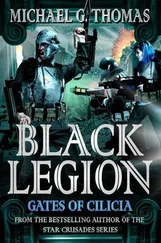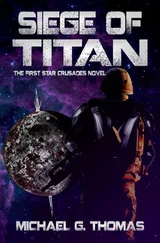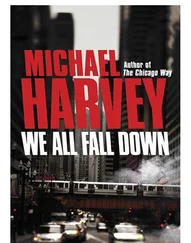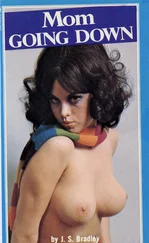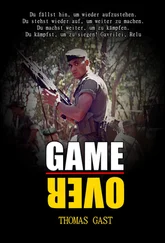I land and then I have him, and even descending the stairs, wrapped in my arms, he’s still looking out. Then I’m back in the living room, holding him. He wriggles free and slides to the floor to join his siblings. Then we just seem to stare at each other — Claire and me — alternately asking if the other is okay. Looking at our kids on the floor. Walking to the kitchen to listen to the news — kept low so as not to let them hear. Picking up the receiver, listening for a dial tone.
Gavin finally gets through on the phone.
“You guys okay?”
“We’re fine.”
“You got wheels?”
“We can’t go anywhere.”
“How many people are in those buildings? Is Brian up there?”
I don’t answer.
“Dude, get out of there. Do you know what’s going on? Bush is six miles high on Air Force One running to some bunker in the Midwest. I’m getting a car, somehow. Fuck! They closed the bridge.”
C’s gone. On the floor he’s left several pictures — planes, towers, fireballs — some the separate objects, some the entire event synthesized in colored pencil and water paints. I find him back in his room, on his bunk, pressed against the window as though he’d be sucked out if it were opened.
“C, get down.”
“People are jumping.”
“No.”
“Then how are they getting down?”
“Come downstairs with me.”
The first tower falls. This time his face doesn’t change, as though he’s already adapted to it. Across the river a cloud rises — ash — gray and white. It unfolds from itself and unfolds again and again, crossing the water, coming to us like a late-Cretaceous plume of postfire. And then we are in it and can no longer see.
I come up the back way, around Cadman Plaza Park, behind the shell of the in-progress Federal Building. Through the windows I can see the hundreds of light bulbs at the ends of hundreds of pigtails, temporary lighting that stretches up and up through a void in the building’s diaphragm, twisting and seemingly replicating itself as it goes to the top. I catch my reflection in the glass of the first floor, and I remember why I haven’t been running. I’ve dropped weight, enough since I last saw Claire for her to notice, to worry.
I don’t wear a watch, but I know the checkpoints for my splits. I base my progress on feeling. I feel I’m moving fast when I hit the concrete runway — the approach for the bridge — which isn’t really a runway, but it seems like it to me so I have to build up speed for liftoff. Even at this late hour there are cars backed up at the light. Their exhaust stinks and they throw off thick heat, which makes them bend in the wash of headlights and streetlights. People stare as I run by their windows. I run on the divide, the embossed yellow line, which separates cyclist side from pedestrian, and then I’m past the cars, bending left toward the bridge. The concrete turns to wooden planks and I rise above the heat and fumes, into the cooler air and headwinds above the river.
It’s 1:25 a.m. and all is well. The electric lights line either side of the wide wooden path and evoke gas lamps, their lenses frosted or etched — I can’t tell, but their light is diffused, making the path ahead always look like a glowing entrance. Up above the lamps is clear. The sky is lacquered azure. No stars here. The moon is behind me. The clouds have gathered again, gray and fat over the mouth of the river, over Lady Liberty. And when I see them, I notice the air’s thickness, the density of the water in it. The bridge cables rise and cross and attach to the highest cross span. It seems impossible, their suspension, their heft, glazed by subtle lights, slack and taut, delicate, heavy, twisted steel — now bonelike, now like sinew and back to braided steel. My list — Claire’s list — seems small, manageable, unremarkable, no different from what any other family contends with, and it is, after all, only money. “There but for the grace of God go I” —up the planks, loosely through the night. I like the greasy slip of my arms, going back and forth against my sides, my sweat evaporating in the night air. Plank after plank goes under me as though the bridge is a giant conveyor belt that I run against.
I wonder how my wife is and I feel like a bastard for not having wondered before, that my latest thoughts had been to sneakily indict her as an architect of my demise. I wonder how her nose is, if Edith would cough up the dough for a surgeon to reset it, or if Claire will finally be blemished. I can’t see her transformed face, but I do see her — young woman, young mother, then mother, ringed by her babies on the beach. Low tide. Sunset. Happy to see me as I appear on the dunes.
There must be wind down on the river, too. The dark water has low crests, which reflect the dim light they gather. They look like hands, and the lapping of the river against the stone pilings sounds like slow claps. Above, the D-train wheels spark against their track, lighting up the Manhattan Bridge’s steel. And after the light there is shadow, dark forms of ghost welders on the beams, and the memory of the train wheels’ spark allows me to see their old torches. The steel, the stone pilings, the dark water all know their own stories, and they reveal them in their own way, the bridges through their solidness, the river with its ceaseless motion — lapping. But also, they are in audience.
A river is a good place for ghosts. Perhaps ghosts believe they are like rivers. Or perhaps they feel they’re like bridges, that they are useful in that way. My mother is a ghost and I hope for both our sakes she finds a river to haunt. I think she may have made some ghosts of her own, flushed some babies down before me, and perhaps some after, and I think, now, I know why. It wasn’t because she didn’t want children, but because her children would never be children. In the end, they would fail, and so would she. So standing at the top of her diasporic arc, she flushed. I wave out to the dark water, if she is there, to tell her I’m okay.
It’s a strange thing, indeed, to go through life as a social experiment. I’ve been to Dublin and London, walked in tobacco and cotton fields. I’ve been to the Oklahoma reservation Minette walked away from, and I’ve seen the Mississippi dump into the Gulf. And I’ve seen a faded rainbow, like the parabolic wake of an arrow, shot through the center of them all. Ellis Island is to my left, and I scan back, south to north from the mouth of the river to the Empire State, red, white, and blue, and back again then up the rising central tower of the bridge to Old Glory. I’m on the flat now, around the back of the tower.
When you do something three hundred times a year for a decade, it becomes, even for me, habitual. So when I look down to where the towers should be, the cognitive dissonance hits me like a punch to the inner ear. I go down as though someone has taken my legs, and then my body, and I’m only a head that drops. Then I’m up again — vain, a cosmic vanity because no one’s there to see it. There’s blood in my mouth.
Brian is buried in a mass grave down there. I know it. Incinerated in an enormous oven. I feel I should call out to him but I know he won’t respond. Just as he never called — returned my stupid message on his machine: How are you doing? — “Not well. I’m dead.” I see him with his shaved head and eyebrows, his saffron robes and alms bowl. He’s sitting at his desk next to the window. I see him on the soccer field, on the baseball field — awkward — then leaning against a locker, talking close and cool with yet another girl. His hair was black, thick and loopy then. I remember him watching Dirty Harry and thinking he could fight and then getting his ass beat. I wonder what the woman he’d told me about, when he first disrobed and moved back, was doing. Did they stay together? Was she dead, too? I wonder what he’d say to me. Do the dead cry out for retribution? Some said they do — but did they really ask the dead?
Читать дальше


